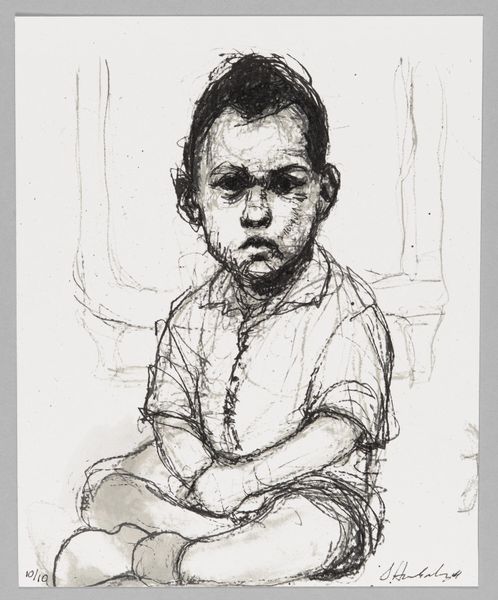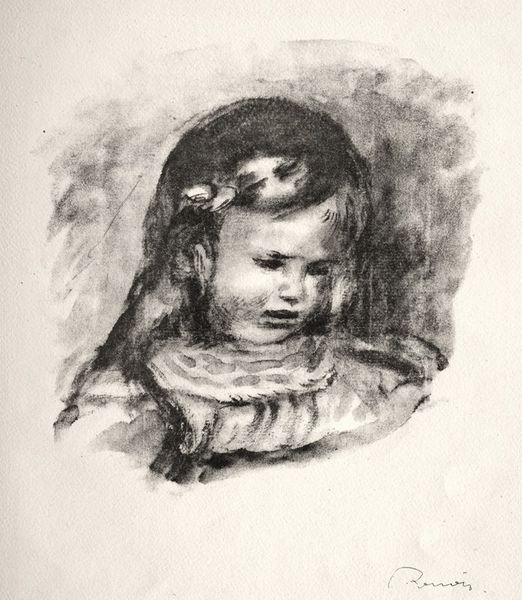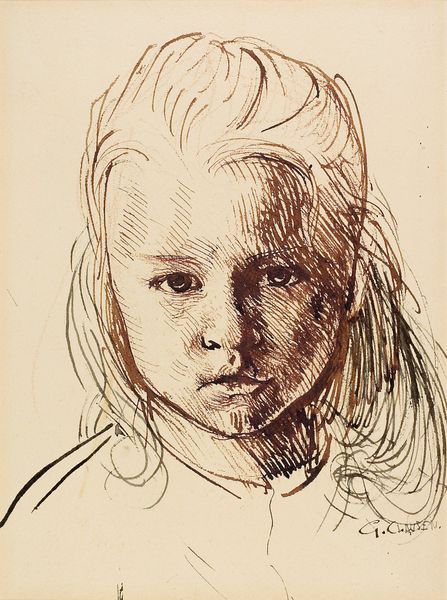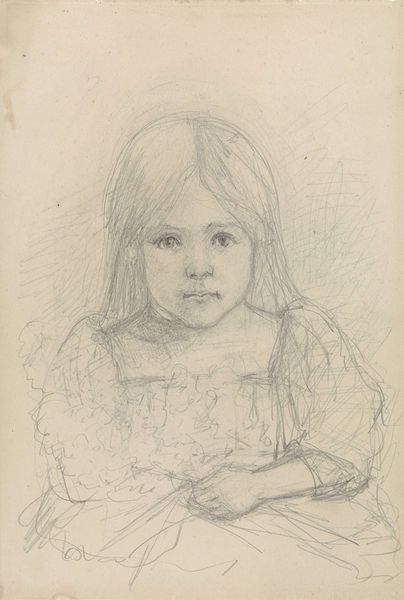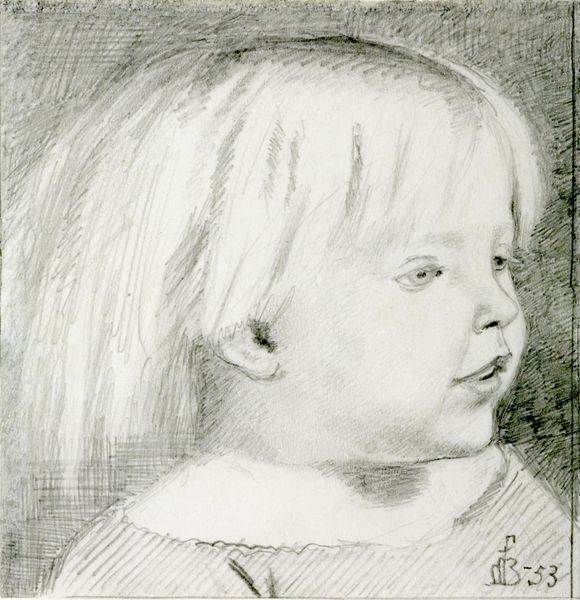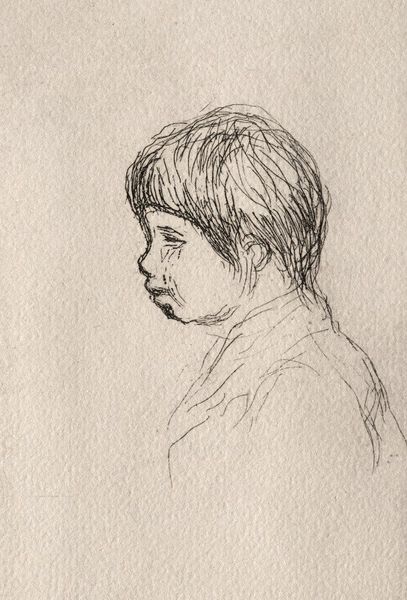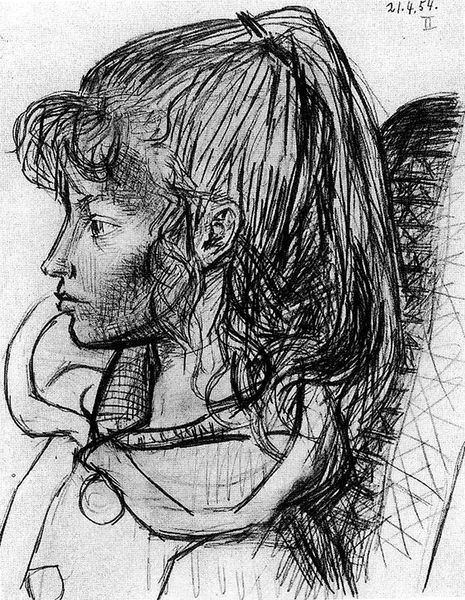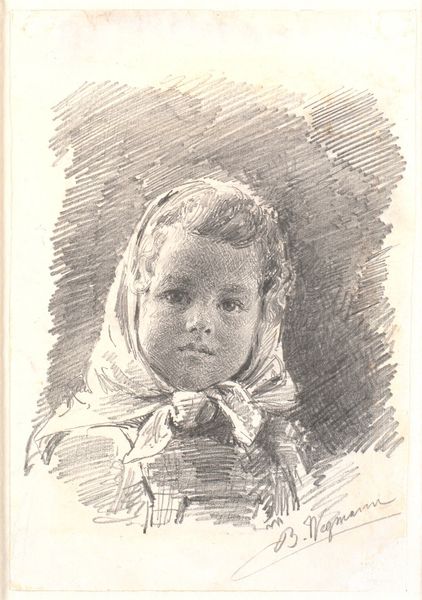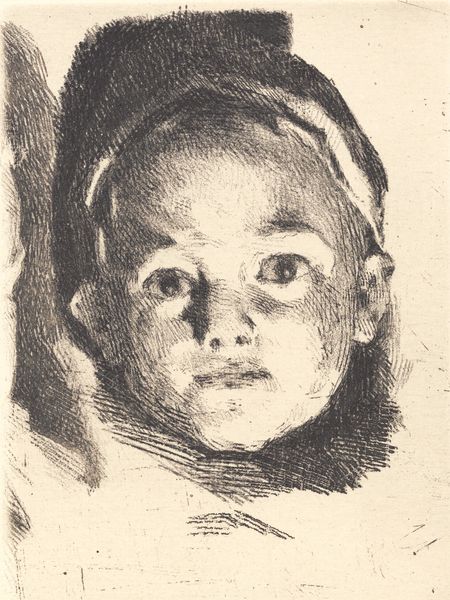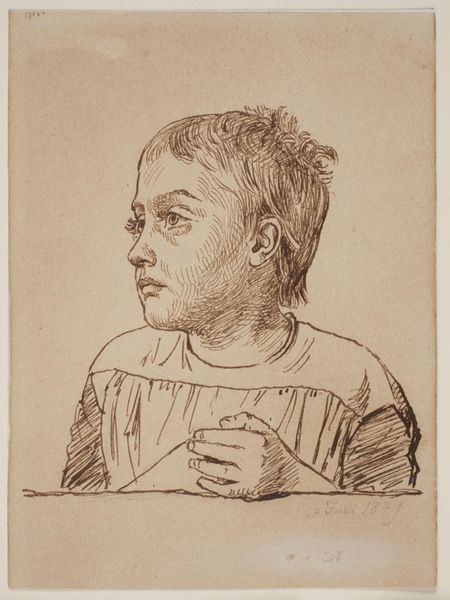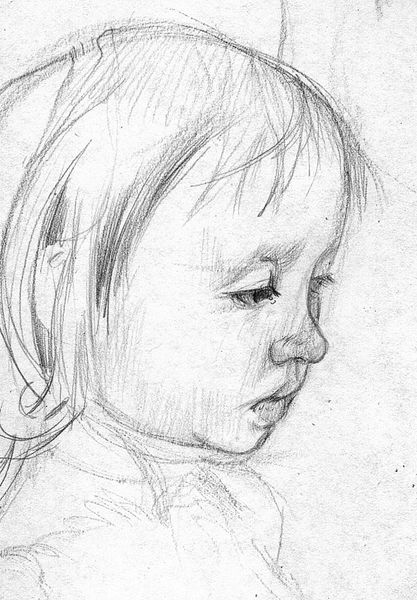
drawing, paper, ink
#
portrait
#
drawing
#
figuration
#
paper
#
ink
#
child
#
modernism
Dimensions: 59.7 x 48.2 cm
Copyright: Pablo Picasso,Fair Use
Editor: So here we have "Portrait of child" by Pablo Picasso, rendered in ink on paper back in 1951. The seemingly quick and light application gives it an unfinished look, somehow. What strikes me is the somewhat confrontational gaze of the child, a really intriguing expression. What can you tell me about this piece? Curator: Well, thinking historically, it's interesting to place this within Picasso's broader engagement with children as subjects. Beyond simply being a personal depiction, what role does portraying childhood play in a society still reeling from the world wars? How does he create a kind of every-child, an image with which any viewer, any parent might connect? The date, 1951, also situates it within the rise of television and photography as new technologies. How does drawing like this function alongside new media? Editor: That's interesting, thinking about photography and TV in opposition to a drawing, you might think one is inherently more valuable because of its medium. Was this image displayed widely at the time, or primarily circulated among art collectors? Curator: Good question. Picasso was incredibly savvy about his own market and legacy. The creation and circulation of his images, even seemingly informal sketches, contributed to his carefully constructed public persona. The art world itself, with galleries, museums, and critics, were really solidifying into their modern form, so a work like this benefits from, and even relies on that machine for dissemination. Does knowing that it’s Picasso change how you feel about it being "unfinished?” Editor: Yes, it makes it seem more intentional somehow, as if that unfinished quality becomes a style, not a shortcoming. Seeing it within that historical context helps. Curator: Precisely. It forces us to consider the art world not just as a realm of aesthetics, but also as a complex, interconnected network of power and representation. Editor: This has definitely made me reconsider Picasso's motives behind his style. It wasn't purely artistic. Curator: Exactly! Considering those political and economic realities of art makes it a richer experience.
Comments
No comments
Be the first to comment and join the conversation on the ultimate creative platform.

